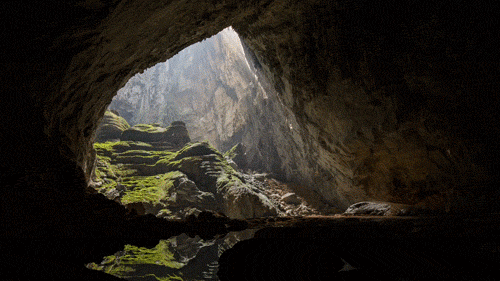#the nature of daylight
Explore tagged Tumblr posts
Text

#maviyenot#aesthetic#mountains#pretty#daylight#cave#sun#style#sunrise#nature#photography#cottage witch#cottagecore#naturecore#landscape#artwork#adventure#travel#traveling#nature photopragpy#artists on tumblr#curators on tumblr#cute#wonderful#the light#places
16K notes
·
View notes
Photo



luminosity; death valley, california
instagram - twitter - website
#photographers on tumblr#original photographers#artists on tumblr#landscape#aesthetic#nature#mountains#desert#photography#art#minimal#travel#death valley#national parks#pastel#colors#daylight#california#dreamcore#hiking#leah berman
10K notes
·
View notes
Text

Instagram
#white blossoms#white flowers#dreamy light#beautiful day#daylight#nature walk#white blossom#spring is here#springtime#flower garden#walk in the garden#garden lover#light#sunny
560 notes
·
View notes
Text


Naturism (by me)
#josdelduca#artwork#amazing body#daylight#photography#picturesbyjos#current mood#natural body#naturism
168 notes
·
View notes
Text
Natural light
#explore#cottage vibes#sunlight#daylight#relaxing#sunshine#interior#breeze#rays of sunshine#decor#exterior#cottagecore#light#cozycore#house aesthetic#home aesthetic#cozy aesthetic#cottage aesthetic#plant decor#plantlife#plants#cozy cottage#comfy aesthetic#warm and comfy#sunny#home plants#natural light#cozy vibes#warm and cozy#home decor
75 notes
·
View notes
Text
...And here we come upon a problem as basic as the nature of knowledge itself: all of our prodigious cognitive and computational abilities are inadequate to a full comprehension of our complex world. As humans, we remain heavily dependent on certain tools of perception and conception that our cultural and biological heritages have taught us are useful. These tools–such as language, causal logic, religion, mathematics–are indeed powerful, but they are powerful precisely because they reduce complexity to intelligibility by projecting our mental concepts onto the world. One consequence of this is that our recognition of significance is always what some philosophers call "theory laden," meaning that it is shaped by what our theoretical framework and cognitive tools encourage us to recognize as meaningful. Anti-Judaism, as I have argued throughout this book, is precisely this: a powerful theoretical framework for making sense of the world.
...
After all, no matter how overrepresented the Jews may have been among the European "bourgeoisie," they remained a tiny minority of that class. How could that tiny minority convincingly come to represent for so many the evolving evils of the capitalist world order? More broadly, how could untold millions of Europeans (and not only Germans) come to believe–or act as if they believed–the claims of the Nazis (and not only the Nazis) that Jews and their conspiracies so threatened the security of the world that they needed to be excluded, expelled, or exterminated? According to Horkheimer and Adorno, the liquidation of the Jews of Europe was not grounded in "reality." It took place in the vast gap between and explanatory framework ("anti-Semitism") that made satisfying sense of the world to a significant portion of its citizens, and the complexity of the world itself.
They set out to explore that gap in a philosophical history of modern thought they drafted in 1944 and later published as Dialectics of Enlightenment. Their final chapter, "Elements of Anti-Semitism: Limits of Enlightenment," suggested that what gave anti-Semitic ideas their power was not so much their relation to reality, but rather their exemption from reality checks–that is, from the critical testing to which so many other concepts were subjected. "What is pathological about anti-Semitism is not projective behavior as such, but the absence of reflection in it." In their terms, the problem is a heightened resistance to reflection about the gap between our ideas about Jews, Judaism, or Jewishness, and the complexity of the world. From their point of view, anti-Semitism provides adherents with a cognitive comfort: the fantasy that the gap between our understanding of the cosmos and its fearful complexity does not exist.
...
...[A]cross several thousand years, myriad lands, and many different spheres of human activity, people have used ideas about Jews and Judaism to fashion the tools with which they construct the reality of their world. The goal of my project, like Horkeheimer and Adorno's, is to encourage reflection about our "projective behavior," that is, about the ways in which our deployment of concepts into and onto the world might generate "pathological" fantasies of Judaism. And my choice of method owes something to Auerbach's conviction that the study of a given moment, problem, or even a single word in the distant past can teach us something about a much longer history, extending even to our own.
Selected excerpts from Anti-Judaism: The Western Tradition (2013 Nirenberg, David)
#atlas entry#everyone should read this book#I know it's a lot. it's 500 pages of extremely dense academia#but it's worth it for the ways it alters your ways of thinking about Jews. Judaism and history#antisemitism and anti-Judaism are very difficult to argue against not because of their validity but their fundamental lack of it#they are by nature irrational and fantastical. that's why antisemitism maps onto conspiracy theories with such ease#they tell us that there is no daylight between the reality of the world and our understanding of it#that what we believe must be true simply because we believe it. it's extraordinarily appealing#antisemitism#jew#jewish#judaism#jumblr#antisemitism is a conspiracy theory#anti-Judaism#david nirenberg#academia
105 notes
·
View notes
Text







⊼ ❀ now you wanna know me



thank you @iuyunji for the event ♡
#♡ ˚ ✿ 🌳⚘ 02nakyy#div © fairytopea#⌑、 ⨳ iuyunji ❛ better things event#winter moodboard#aespa moodboard#kim minjeong moodboard#nature moodboard#flower moodboard#daylight moodboard#cafe moodboard#blue moodboard#green moodboard#messy moodboard#cute moodboard#kpop gg moodboard#kpop moodboard#y2k moodboard#pink moodboard#beige moodboard#clean moodboard#aesthetic moodboard#alternative moodboard#kpop#gg moodboard#kpop messy moodboard#archive moodboard#white moodboard#kpop girls#kpop girls icons#kpop icon
118 notes
·
View notes
Text



#photography#botanical photography#nature#plants#adventure#landscape#explore#joy#love#spirituality#forest#woods#forest spirit#trees and forests#forest speaks#forest scenery#landscapes#green#morning#daylight#fotografia#naturecore#nature colors#nature photography#natureza#trees#paisagem#space exploration#healing#world
44 notes
·
View notes
Text


If it’s meant to be then it will be
#ethel cain#hayden anhedönia#preachers daughter#rural america#rural gothic#southern gothic#midwest gothic#daylight#deer#nature#naturecore#katsoriginals
28 notes
·
View notes
Text
youtube
A tribute to Faroe. Part 45 The Fire made me sob and I wanted to make something showing Arthur's guilt, sorrow, and love for her.
#malevolent#malevolent podcast#arthur lester#faroe lester#faroe malevolent#audio edit#on the nature of daylight#I cried several times editing this#also I'm now finally putting my edits on youtube#asthecrowedits
37 notes
·
View notes
Text

patrick walker photographed by @alexdrogers
#alex d rogers#patrick walker#nikon#nikon z8#z8#black actor#actor headshot#natural light#dtla#daylight studio#studio portrait#actor portrait#actors#photograhers on tumblr
35 notes
·
View notes
Text

And so
The light from the sun
Brought the stars
Down to Earth
And scattered them
Across the sea
#my writing#my photgraphy#poetry#poem#sun#sea#nature poem#nature#nature photography#stars#daylight#spirituality#spilled ink#poets on tumblr#writers and poets#creative writing
200 notes
·
View notes
Text


#photograph#my photos#photooftheday#picture#photographer#photoshoot#photo#photography#photoshop#cloud#cloudcore#cloud aesthetic#cloud appreciation#clouds aesthetic#clouds#sky#skyscape#day#daylight#nature#nature pics#nature photography#nature aesthetic#nature lovers#nature hikes#landscape#mother nature#fluffy clouds#clouds and sky#clouds photography
97 notes
·
View notes
Text

small moon in daylight
#moon#daylight#forest#sky#blue sky#clouds#nature#nature aesthetic#nature photography#photography#original photographers
26 notes
·
View notes
Text

Day 100 - Daylight
#happy new year#明けましておめでとうございます#daylight#sun#mt fuji#chureito pagoda#nature#nature photography#Japan#photography#art#artists on tumblr#original photographers#my art#photographers on tumblr#image description in alt#original art#mount fuji#mountains#mt. fuji#angelamaartchive
29 notes
·
View notes
Text

#aesthetic#nature#photography#vintage#green#nature landscape#nature lovers#sky photography#sky pictures#sky#skyline#sky lovers#clouds#sunset#sunlight#sunrise#golden hour#evening#life#lake#lake life#trees#sun#daylight#water#river#landscape#landscape photography#mobile photography
20 notes
·
View notes